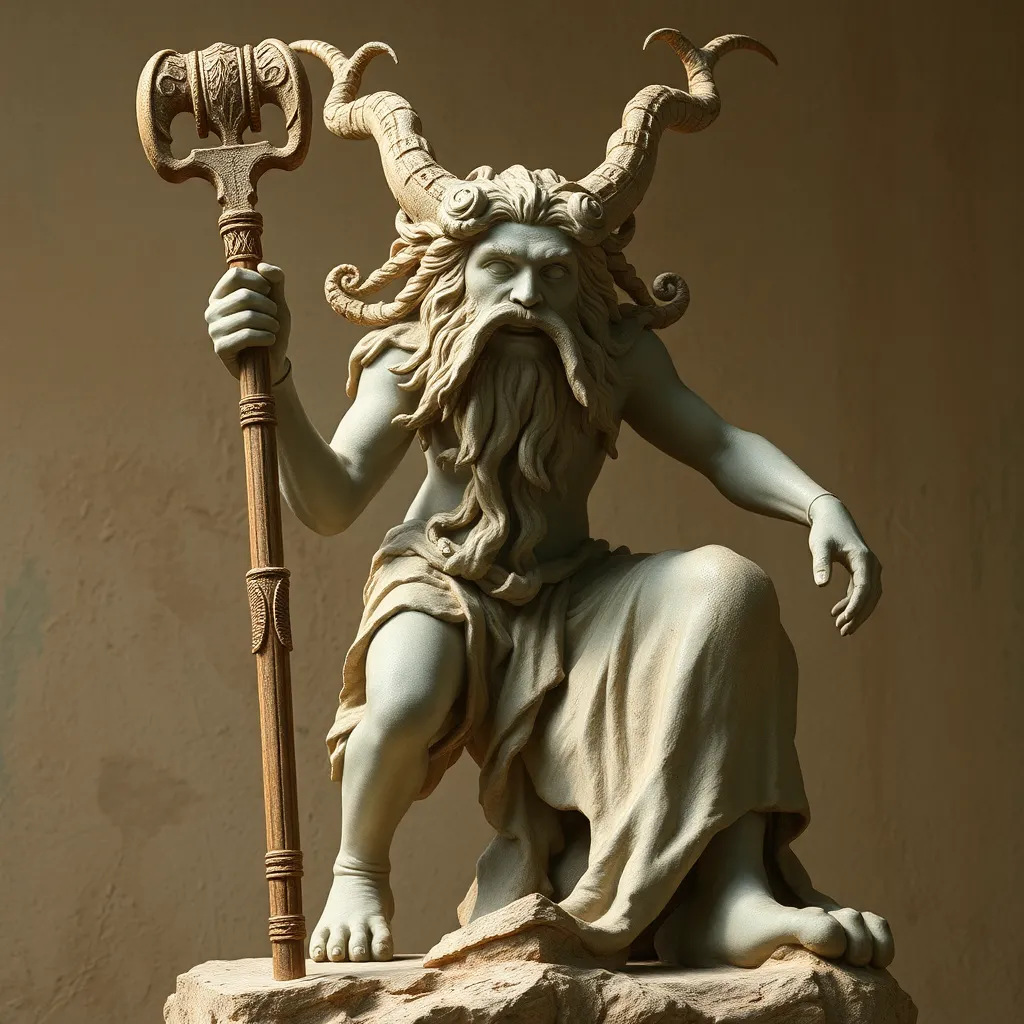The Influence of Cyclopes on Later Mythological Traditions
I. Introduction
The Cyclopes are fascinating figures from ancient mythology, known for their distinctive characteristics—most notably, their single eye located in the center of their foreheads. In ancient Greek mythology, these beings are often depicted as gigantic, strong, and somewhat brutish, embodying primal forces and chaos. This article explores the Cyclopes’ origins, their role in mythological narratives, their adaptations in Roman and later traditions, and their lasting influence on modern storytelling.
II. Origins of the Cyclopes in Greek Mythology
The origins of the Cyclopes can be traced back to early Greek literature, particularly in the works of Homer. In his epic poems, the “Iliad” and the “Odyssey,” the Cyclopes are depicted as wild and uncivilized beings living in isolation from the rest of humanity. Their first appearances in these texts provide insight into the cultural context of the time, where they symbolize the untamed forces of nature and the chaos of the world.
- Historical Context: The Cyclopes are believed to have emerged from the rich tapestry of Greek mythology during a time when humanity was grappling with the unknown and the chaotic forces of nature.
- Symbolism: Cyclopes represent primal forces, embodying the raw power of nature and the unpredictability of life.
III. The Role of Cyclopes in Greek Mythological Narratives
In Greek mythology, Cyclopes play significant roles in various narratives, with some myths being more prominent than others. One of the most famous Cyclopes is Polyphemus, featured in Homer’s “Odyssey.”
Key myths that include Cyclopes highlight their interactions with gods and heroes:
- Polyphemus in the Odyssey: Polyphemus is a shepherd who captures Odysseus and his men, trapping them in his cave. The cleverness of Odysseus ultimately leads to Polyphemus’s downfall.
- Relationship with Deities: The Cyclopes are also depicted as craftsmen who forge powerful weapons for the gods, such as Zeus’s thunderbolts.
IV. Cyclopes in Roman Adaptations and Interpretations
As Greek mythology spread throughout the Roman Empire, the Cyclopes underwent transformations in Roman literature and culture. The adaptations often emphasized different aspects of these beings.
- Transformation in Literature: Roman poets like Virgil and Ovid reinterpreted Cyclopes, often portraying them as more complex characters, blending their monstrous traits with elements of depth and artistry.
- Cultural Influence: The Cyclopes influenced Roman art and architecture, appearing in various mosaics and sculptures as symbols of strength and craftsmanship.
V. Comparative Analysis of Cyclopes in Other Mythological Traditions
The Cyclopean archetype is not unique to Greek mythology; similar beings can be found in other mythological traditions, showcasing cross-cultural influences.
- Norse Mythology: The Jotnar, or giants, often possess attributes reminiscent of the Cyclopes, such as immense strength and a connection to chaos.
- Celtic Mythology: In Celtic tales, there are references to one-eyed giants, suggesting a shared archetype across cultures.
VI. The Cyclopes in Medieval and Renaissance Literature
The Cyclopes experienced a resurgence in interest during the medieval and Renaissance periods, where they were reinterpreted in various literary works.
- Medieval Texts: Cyclopes appeared in medieval romances, often portrayed as creatures of great strength who were both feared and respected.
- Renaissance Resurgence: The rediscovery of classical texts during the Renaissance led to a renewed fascination with Cyclopes, inspiring artists and writers to explore their themes of chaos and creation.
VII. The Legacy of Cyclopes in Modern Popular Culture
Today, the legacy of the Cyclopes continues to thrive in modern popular culture, where they are often depicted in literature, films, and art.
- Contemporary Literature: Modern authors draw on the Cyclopean archetype to explore themes of isolation, power, and the clash between civilization and chaos.
- Film and Art: Films such as “Clash of the Titans” and various animated adaptations feature Cyclopes as powerful yet misunderstood beings, often serving as metaphorical representations of humanity’s struggle against primal forces.
VIII. Conclusion
The Cyclopes have left an indelible mark on mythological traditions, influencing countless stories across cultures and eras. Their representation as symbols of chaos, strength, and craftsmanship continues to resonate in modern narratives. By studying the connections and adaptations of the Cyclopes, we gain a deeper understanding of how mythology evolves and how ancient themes remain relevant in contemporary storytelling.
In conclusion, the Cyclopes serve as a reminder of the enduring power of myth and the ways in which these ancient narratives shape our understanding of the world, both past and present.




